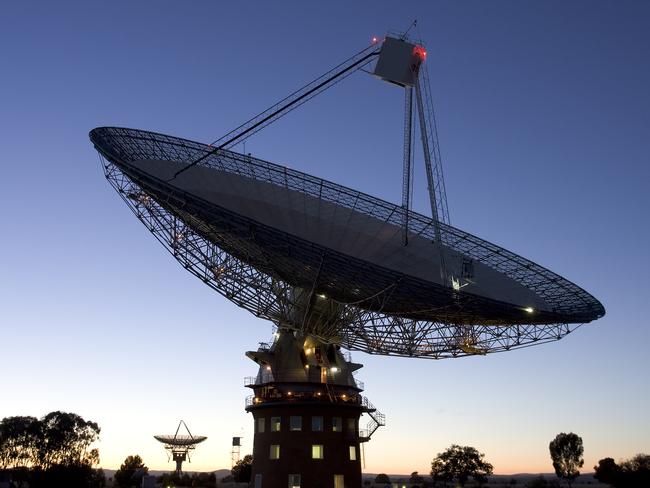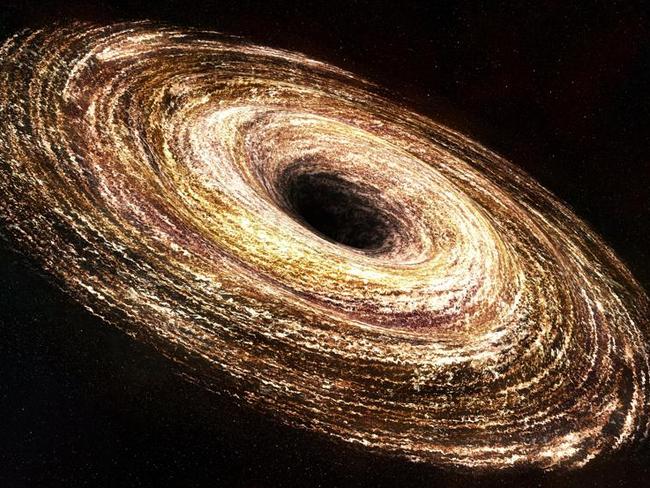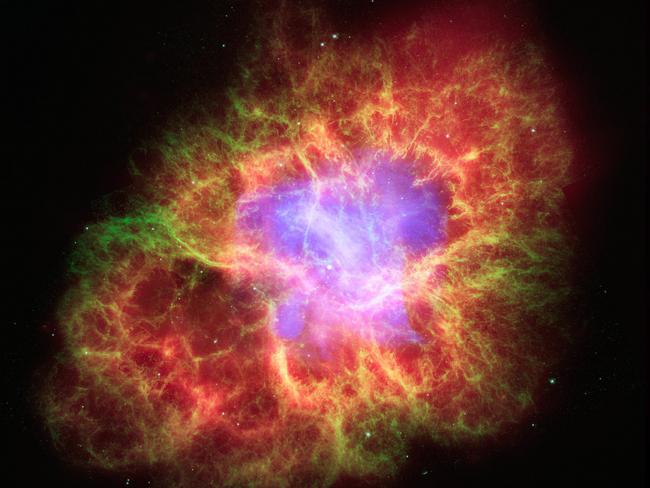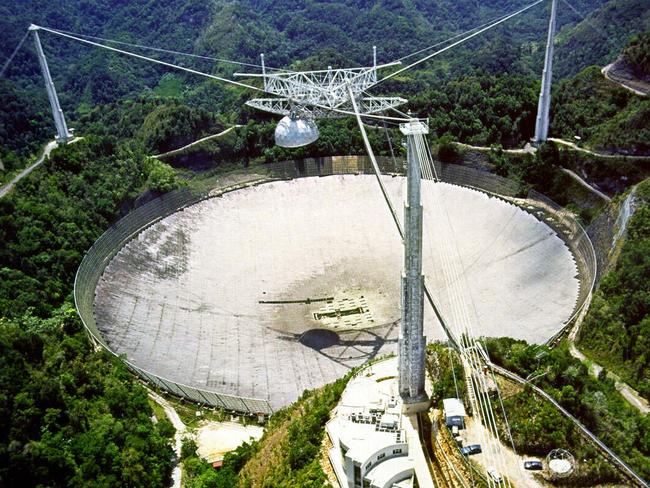Puerto Rico’s Arecibo Observatory detects mysterious “fast radio burst” from deep in outer space
A TELESCOPE in Puerto Rico has confirmed what Australian astronomers have known for a while: There are mysterious signals coming from another galaxy.
A TELESCOPE in Puerto Rico has confirmed what Australian astronomers have known for a while: There are mysterious sounds emanating from deep in outer space.
The Arecibo Observatory has picked up split-second bursts of radio waves from beyond the Milky Way, which have excited astronomers from around the world, science website Phys.org reports.
Parkes’ radio telescope in central NSW was the first to discover these curious pulses, but some scientists wrote these off because it was the only facility to report the findings.

But now the Puerto Rico telescope’s international team of astronomers has detected similar intergalactic radio wave bursts.
“Our result is important because it eliminates any doubt that these radio bursts are truly of cosmic origin,” principal investigator for the pulsar survey Victoria Kaspi said.
“The radio waves show every sign of having come from outside our galaxy — a really exciting prospect.”
RELATED: ‘Meteorite’ seen in four Australian states may be Russian space junk

So what is the source of the unidentified sounds?
This question presents a perplexing mystery for astrophysicists and there is no consensus.
Possible answers include evaporating black holes, the merging of neutron stars or flares from magnetars (neutron stars with powerful magnetic fields).

The cosmic bursts, which last only a few thousandths of a second, are estimated to occur about 10,000 times a day.
“The brightness and duration of this event, and the inferred rate at which these bursts occur, are all consistent with the properties of the bursts previously detected by the Parkes telescope in Australia,” said Laura Spitler, the lead author of a paper on the subject published yesterday in The Astrophysical Journal.
The Arecibo Observatory has the world’s largest and most sensitive radio telescope, with a dish that spans 305m.




